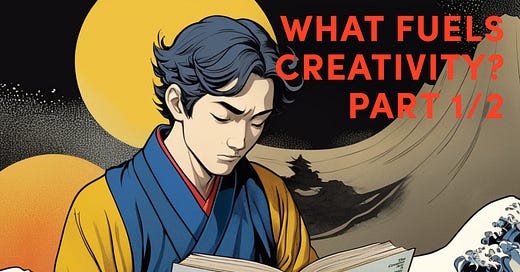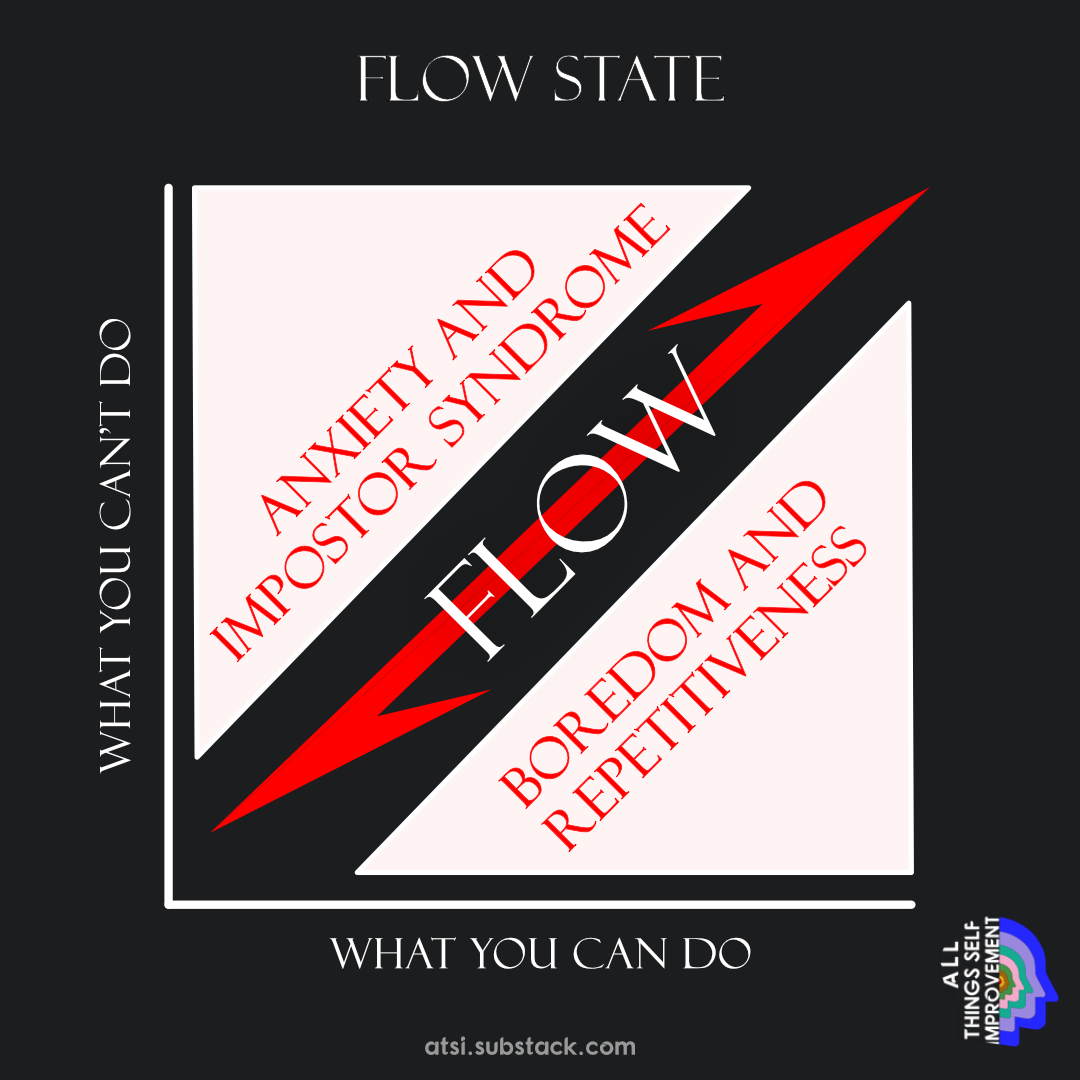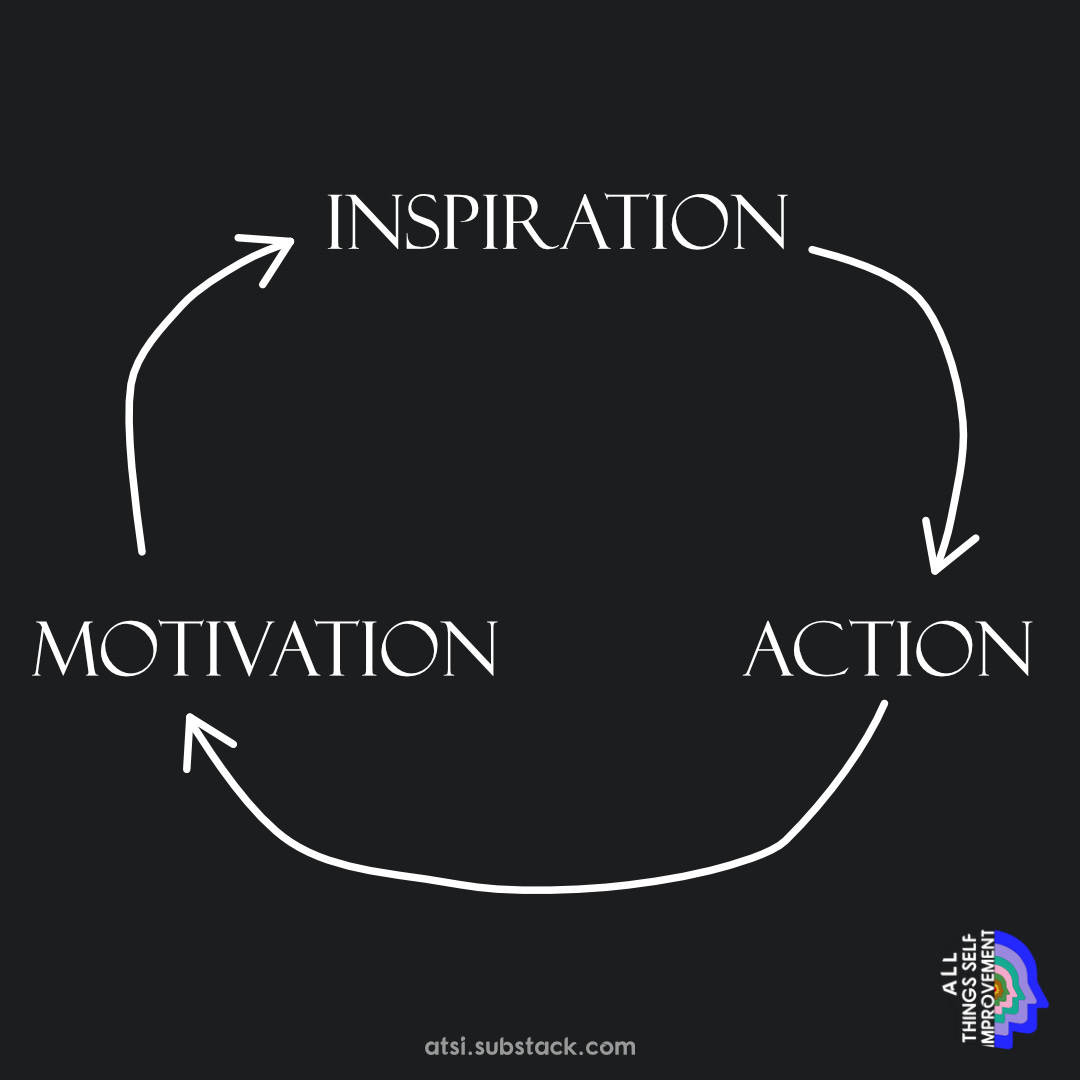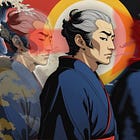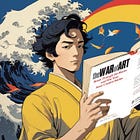5 Lessons From Rick Rubin's "The Creative Act: A Way of Being" (1/2)
"The Creative Act: A Way of Being" insights and analysis. What Fuels Creativity Part 1/2.
Another book every creative should read to know themselves better. The book is divided into 78 short chapters, each focusing on a specific concept or insight about creativity and the creative process. We will look closer to a few of them, this is my reinterpretation so read the original book (seriously, it’s good) to know the original author’s thoughts.
If you don’t know who Rick is: Nine-time GRAMMY-winning producer, named one of the 100 most influential people in the world by Time and the most successful producer in any genre by Rolling Stone. He has collaborated with artists from Tom Petty to Adele, Johnny Cash to the Red Hot Chili Peppers, Beastie Boys to Slayer, Kanye West to the Strokes, and System of a Down to Jay-Z.
Every person reading this knows at least one song produced by him.
1. Experimenter and finisher - which one are you?
In their nature, many artists lean toward one of two categories: Experimenters or Finishers.
Experimenters are partial to dreaming and play, finding it more difficult to complete and release their work.
Finishers are the mirror image, a backward reflection. They move quickly to the end point with immediate clarity. They are less interested in exploring the possibilities and alternatives that the Experimentation and Craft phases can suggest.
Each might find it helpful to borrow from the other.
I’m the experimenter, definitely. This chapter takes up about a page and a half in the book, but we will break it down in detail here.
The Experimenter
Eager to start new projects and explore fresh ideas (often before finishing the previous project, kind of a shiny object chaser).
Curious, wants to discover stuff.
Flooding with ideas but struggles with sticking to one.
Leaves projects unfinished due to distractions or lack of focus.
Enjoys the process more than the outcome (sometimes).
Likes to tweak unimportant details to perfection.
More started projects than finished ones.
Example artists:
Kanye West
Andy Warhol
Pablo Picasso
The Finisher
Focused on refining, perfecting, and completing projects.
Driven by the satisfaction of bringing work to closure.
Would skip the process if possible.
Maintains focus and determination through to the end.
Struggles with starting new projects due to fear of failure or imperfection.
Prefers familiar processes and approaches.
Risks over-polishing or delaying completion in pursuit of perfection.
More finished projects than started ones.
Example artists:
Michelangelo
Leonardo da Vinci
Stephen King
Didn’t ask them though.
2. Planting seeds
In the first phase of the creative process, we are to be completely open, collecting anything we find of interest.
We can call this the Seed phase. We’re searching for potential starting points that, with love and care, can grow into something beautiful. At this stage, we are not comparing them to find the best seed. We simply gather them.
A seed for a song could be a phrase, a melody, a bass line, or a rhythmic feel.
For a written piece, it may be a sentence, a character sketch, a setting, a thesis, or a plot point.
Everything is a remix, everything comes from, greater or lesser, inspiration. You throw seeds on the ground and nourish those that grow. You can choose your seeds: what you listen to while commuting, what you watch while eating, what you scroll on the toilet. Collecting seeds doesn’t require much effort. You can put more pressure on it to speed up the process, but it comes naturally as you just go through life.
Seeds can grow unexpectedly and rapidly. An inconspicuous one thrown in a dark and dry area of the field can spike up and bear a beautiful fruit. On the other hand, some seeds die despite watering.
Quantity breeds quality
The more seeds we collect, the more context we gain for deciding which to pursue. It’s rare that a seed brings no value at all. Placing more seeds in the strainer of circumstances and character reveals the good ones. Revisiting the seeds can reveal which germinate with low effort.
Practical takeaways: always write down good ideas asap, you can’t control when inspiration strikes but receive it well when it’s there.
3. When flowing, keep going
Ride the wave as long as it can be ridden. If you are fortunate enough to experience the strike of inspiration, take full advantage of the access. Remain in the energy of this rarefied moment for as long as it lasts. When flowing, keep going.
If you’re a writer and you tap into a stream of ideas before bed, you may want to stay with it until dawn (literally how my book originated). If you’re a musician and you’ve reached your goal of creating one song or ten songs, yet the music is still coming, capture all you can.
The work yielded may not be used in the current project, but it may be of use another time. Or it may not. The task of the artist is simply to recognize the transmission and stay with it in gratitude, until it truly runs its course.
The hardest part is starting. You can't swim without going into the water. Throwing yourself into water too deep will make you fight for survival, stepping into the water too shallow, will make a boring crouch walk. The middle is where the flow state is:
Practical takeaways: use the strike of inspiration to the fullest. Work longer.
4. Trust in the process beats doubts
Self-doubt lives in all of us. And while we may wish it gone, it is there to serve us.
Flaws are human, and the attraction of art is the humanity held in it. If we were machinelike, the art wouldn’t resonate. It would be soulless. With life comes pain, insecurity, and fear.
We’re all different and we’re all imperfect, and the imperfections are what makes each of us and our work interesting. We create pieces reflective of who we are, and if insecurity is part of who we are, then our work will have a greater degree of truth in it as a result.
The making of art is not a competitive act. Our work is representative of the self.
Self-doubt is unavoidable. The goal is to learn how to deal with it. You can’t run away from self-doubt without running away from what you want to achieve. It’s part of the process. Doubt is evidence that you care deeply about what you are creating. Don’t try to silence it—move forward despite it and it will eventually fade, only to reappear when working on a challenge tier higher. That occurrence is repetitive. Self-doubt you went through will make the next unfamiliar thing less scary. Knowing you have done it before will make familiar tasks easier and give you more confidence in the face of the unfamiliar. Dealing with self-doubt is like leveling up.
Consistency over perfection.
A skill of showing up no matter the mood or lack of inspiration is crucial. Not every day will bring breakthroughs but progress is the cumulative effect of consistent effort. Trust that showing up will eventually lead to meaningful achievements, even if some days feel unproductive. Taking one step at a time is effortless and easy. Thousands of those steps will take you far. Before every worthwhile event, there’s a long and boring process.
Inspiration follows the act of doing. By showing up and starting, even without a clear idea, you open yourself to the flow of creativity.
5. Clean slate: detach from your work
After spending thousands of hours working on a piece, it’s difficult to judge it from a neutral place. When someone experiences the work for the first time, after only two minutes they may see it more clearly than you do.
In time, almost every artist finds themselves too close to the things they make. After endlessly working on the same piece, perspective is lost. We develop a kind of blindness. Doubt and disorientation may creep in. Judgment is impaired.
If we train ourselves to step away from the work, to truly detach from it, to distract ourselves completely, to dive fully into something else...
After being away for a long enough period of time, when we come back, we just may be able to see it as if for the first time.
This is the practice of cleaning the slate.
More ≠ better. A LOT of writers should put this phrase on their bathroom mirrors. We like putting out more content because we are attached to the work. It’s not just more content, it’s more of our content, and everyone wants to hear more from us + it would be a waste to not publish what’s already there, right?
I struggle with the opposite—I don’t like fillers and unnecessary words. In school, we were taught to hit a word threshold, which resulted in repeating the same ideas using different words and phrasing. I feel like some people kept that habit, even nurtured it. I’m not talking about SEO-oriented articles that just need to be filled with crap to show higher in search results, I’m talking about people who (especially in speech) beat around the bushes for a good few minutes before getting to the point. Ending my rant—try an exercise of reducing your next work to only what's necessary. You don't need to keep it that way, it's for gaining a new perspective. The book itself is written in such a way—only what’s necessary to transfer the idea.
Sometimes I’m just clueless, and I bet I’m not alone in this. Sometimes I can’t tell if what I created is my opus magnum or a pile of shit. I literally can’t lean an inch towards any of these options. I'm right in the middle, with no signs pointing in either direction. The fix for that is very simple: leave your project for some time—a great refresher. Asking for feedback is a good idea too.
Summary
My favorite book I have read in 2024 (The Power of Now takes 2nd place). Deeply resonated with me. Going through some of the chapters I felt like I’m reading my own thoughts.
This post is the first part of a two-part series titled “What fuels creativity?”. The final part will be published next week.
I could go through every 78 chapters one by one, but I highly recommend reading the whole book yourself. Get it here! (Affiliate).
Some cool quotes from Rick:
Holding your work hostage to meaning is a limitation.
“
It's difficult to have a clear perspective on your own work. It's very hard to know yourself.
“
You don’t have to stand for your work, nor does your work have to stand for anything but itself. You are not a symbol of it. Nor is it necessarily symbolic of you. It will be interpreted and reinterpreted in the eyes and ears of those who know almost nothing about you.
“
Artists are often portrayed in films and books as tortured geniuses. Starving, self-destructive, dancing on the brink of madness.
This has instilled the belief that to make art, one has to be broken. Or that the force of art is so powerful that it breaks its maker.
Neither generalization is true. These misconceptions have a disheartening effect on the would-be artist. Some creators may live with a profound darkness. Others stride forward with ease and exuberance. Between lies a wide range of artistic temperament.
“
It requires the obsessive desire to create great things.
“
There is no wrong way to make art.
“
Having the knowledge won’t hurt the work. How you use the knowledge may. You have new tools. You don’t have to use them.
“
“Whether the work comes easily through play or with difficulty through struggle, the quality of the finished piece is unaffected.”
“
Success is harder to come by when your life depends on it.
“
Great ideas often originate from unexpected places.
“
Always comment on the work itself and not the individual that made it. If a participant takes a critique personally, they tend to shut down.
“
We’re not looking for more for the sake of more. We’re only looking for more for the sake of better. The goal is to get the work to the point that when you see it, you know it couldn’t have been arranged any other way. There’s a sense of balance. Of elegance.
“
Michelangelo’s David, the first cave paintings, a child’s finger-paint landscapes—they all echo the same human cry, like graffiti scrawled in a bathroom stall: I was here.
And tons of others. Just read the book!
Also read:
Get my habit tracker!
See yourself growing and witness your life going in the right direction!
This is basically a checklist for your dream life!

